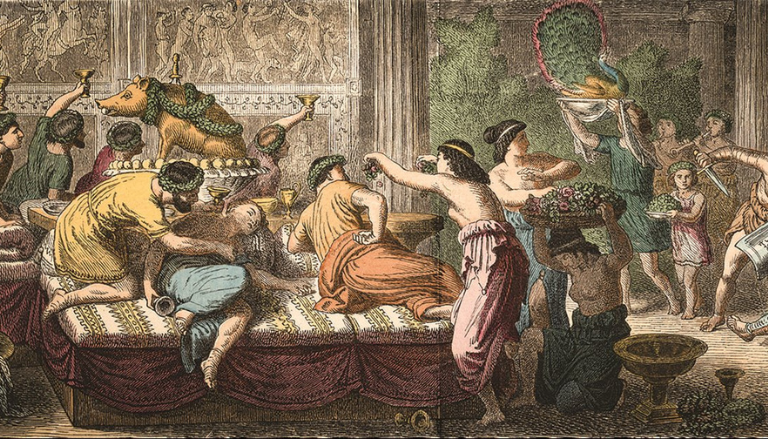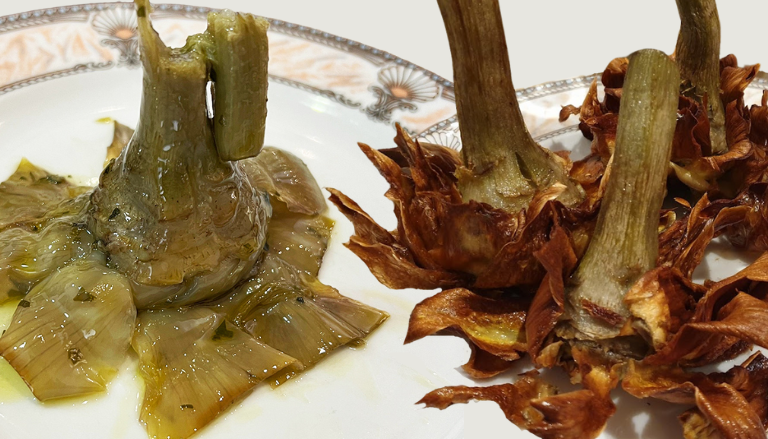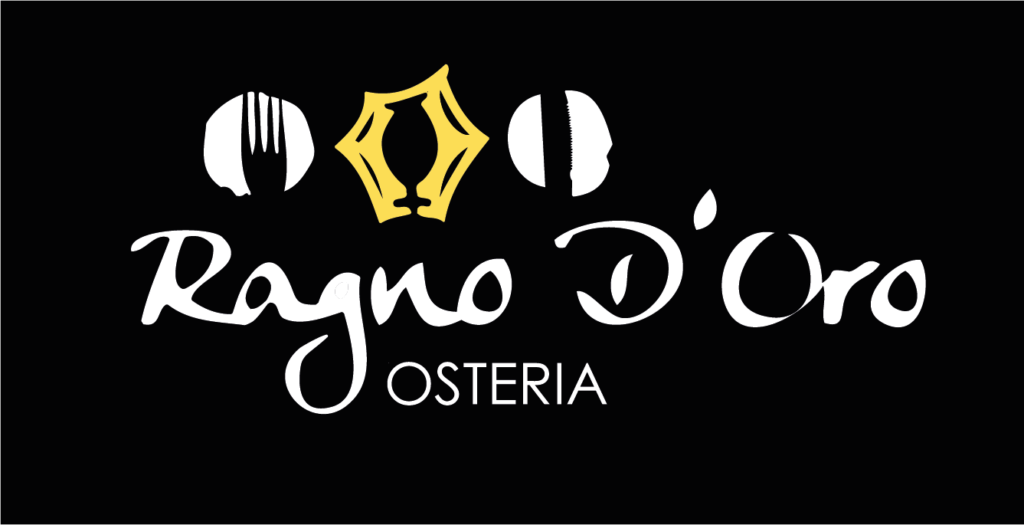Historical curiosities about Roman cuisine

Rome is not only about monuments, but also about flavours with ancient roots. From the tables of the patricians to imperial banquets, Roman cuisine tells stories of empire, innovation and conviviality. Let’s discover some surprising facts behind some of the dishes we still celebrate today. 1. Garum: the Romans’ sauce Made by fermenting blue fish such as sardines in salt and entrails under the sun, garum was the main condiment in ancient Rome, used as liquid salt and even in sweet recipes. Thanks to recent DNA analysis of jars dating back 1,800 years, it is now confirmed that garum was made mainly from sardines, rich in umami and exported throughout the Empire, and can be considered a kind of ketchup of the past. It was so demanded that there were specialised factories producing it, with a commercial network that took it as far as Gaul and Britannia. 2. Wine and oenogarum: bold blends Roman wine was often mixed with water or even vinegar. In some fancy versions, oenogarum, old wine, and garum were mixed together to make a sour and tasty sauce, used as a condiment or an interesting drink. The Romans thought drinking pure wine was barbaric and liked it flavoured with honey, spices, or rose petals. 3. Roman-style tripe, from poor man’s food to cultural symbol Once an essential food source for slaughterhouse workers, tripe has become a staple of traditional Roman cuisine, enhanced with tomato, fresh mint and pecorino cheese: proof of how the “fifth quarter” (offal, entrails and less prized cuts) has become popular art. 4. Legumes and cheese: the heart of the peasant diet Beans, lentils, chickpeas and sheep’s cheese were the basis of the plebeians’ diet. Cheeses were even given as gifts during Saturnalia, ancient festivities dedicated to the god Saturn, which included banquets and exchanges of gifts, with dedications in poetic verse and scented with honey or herbs. 5. Thermopolia and Isicia Omentata: when fast food was already Roman Tabernae served quick meals, especially to the working classes. Among the most interesting dishes was Isicia Omentata, meatballs or “burgers”, an ancestor of the modern hamburger, seasoned with garum and spices. Thermopolia, kiosks with pots built into masonry counters, were the heart of fast food for those who could not cook at home. 6. Sweet and savoury: the most unusual recipes The Romans loved bold combinations: pear paté with eggs, honey, pepper and garum; gustum de praecoquis with spiced apricots in a sweet and spicy sauce. These combinations surprise the modern palate. These recipes, handed down by Apicius in his ‘De Re Coquinaria’, were intended to surprise guests and reflected a taste for the exotic and contrasting flavours. 7. Spices of the Empire The Roman Forum was home to the Pepper Warehouse (Horrea Piperataria), where pepper and spices imported from India and Egypt were stored, a true symbol of imperial power and control over the trade in precious aromatics. Black pepper was so valuable that it was also used as currency and given as a diplomatic gift. 8. Bread and sociability Bread, which originated in the 1st century AD, was the staple food and accompanied every meal, offered in different versions depending on social class: wholemeal, spelt, siligineus and even flatbread. In any case, in Rome and throughout the Empire, it was also provided to soldiers, to the sailors in their own version and to the poorest citizens, so that no one would go without it. Bakeries were widespread and often linked to a domus or artisan workshop. Every Roman dish preserves echoes of the past: a mix of pragmatism, taste, imagination and economy. Come and discover the modern variations at Ragno d’Oro, where tradition meets the flavour of modern Rome.
Artichokes in roman cuisine

When it comes to Roman cuisine, artichokes hold a place of honor due to their versatility and unmistakable flavor. Two of the most iconic preparations are artichokes alla giudia (carciofi alla giudia) and artichokes alla romana (carciofi alla romana). These dishes can be enjoyed all year round thanks to the different varieties of artichokes: single-crop varieties, which bloom in spring, and reflowering varieties, available from October until May. The two recipes, symbols of Roman tradition, differ in both preparation and history. Artichokes alla giudia, crispy thanks to double frying, are a dish rooted in the long Jewish-Roman tradition, originating in the heart of the Ghetto in the 16th century. Artichokes alla romana are stuffed with a mixture of herbs and cooked slowly, representing the authenticity of Lazio’s rustic cuisine. In this article, we will explore the unique characteristics of these two specialties, analyzing the ingredients, cooking methods, and historical details that make them authentic symbols of Roman gastronomy. Artichokes alla giudia: a Jewish-Roman tradition Artichokes alla giudia are a symbol of the Jewish-Roman tradition. Originating in the Jewish ghetto of Rome, housewives prepared them as a festive dish to break the fast of Yom Kippur. The artichokes have deep roots in this culture. Thanks to their seasonal availability in spring, they have become a classic dish for Passover (Pesach) and, over time, a delicacy appreciated well beyond the borders of the ghetto, winning the hearts of all Romans. Carefully cleaned and shaped into a “rose,” the artichokes are dipped in a solution of water and lemon to preserve their vibrant color. They are then fried in abundant extra virgin olive oil in two distinct stages: the first frying cooks the artichokes, while the second frying in boiling oil gives them a golden, crispy exterior. This process creates a delightful contrast between the crisp crust and the soft, flavorful interior of the artichoke. To complete the dish, a splash of white wine and a pinch of salt are added, providing a final touch that makes it truly irresistible. Artichokes alla romana: simplicity and taste If the artichokes alla giudia represent the crispness of frying, the artichokes alla romana highlight the sweetness of slow and aromatic cooking. Here, the artichoke is not fried but is slowly cooked in a pan, allowing the flavors to blend into a dish that celebrates the freshness of herbs. To prepare the artichokes, they are first cleaned by removing the tougher outer leaves, and then they are stuffed with a filling of parsley, garlic and minced meat. Once placed in a pan with olive oil, water, and a splash of white wine, they are cooked over low heat until tender. This cooking method not only enhances the flavor of the artichoke but also transforms it into a delicious and nutritious side dish, perfect for accompanying meat or fish dishes. Why are artichokes good for your health? Artichokes have been a part of our culinary culture for centuries, but do we know what their beneficial properties are? These vegetables are an important source of potassium and iron, which support our cardiovascular system and stimulate the production of red blood cells. They also help slow down cellular aging, thanks to the presence of antioxidants such as vitamin C. Additionally, they are rich in fiber, which promotes intestinal health and helps regulate appetite. What’s more, they contribute to reducing blood cholesterol levels. Finally, they contain a substance called cynarin, which has cleansing properties and promotes the regular functioning of the liver and digestive system. Therefore, we can say that artichokes have various beneficial properties; however, like any food, they should be consumed in moderation. A comparison of styles and traditions While the artichokes alla giudia are a festive and rich preparation, the artichokes alla romana embody a simplicity that leads to extraordinary results. Both dishes celebrate the Roman artichoke and the culinary traditions of the capital. In Rome, the passion for artichokes is celebrated through numerous festivals and fairs dedicated to this precious vegetable. During the month of April, events such as the Festival of the Roman Artichoke and the Sagra of the Roman Artichoke, both offering the opportunity to taste typical specialties like the artichokes alla romana and alla giudia, all in a lively and convivial atmosphere. These events provide a true journey into the heart of Roman culinary tradition, where each dish tells the story and authentic flavor of the city. Whether for an informal dinner or a special occasion, these dishes remain authentic symbols of Roman gastronomy, capable of evoking memories and unique flavors with every bite. We invite you to visit our tavern to taste these delicacies and immerse yourself in the rich gastronomic tradition of the capital. Book now!
